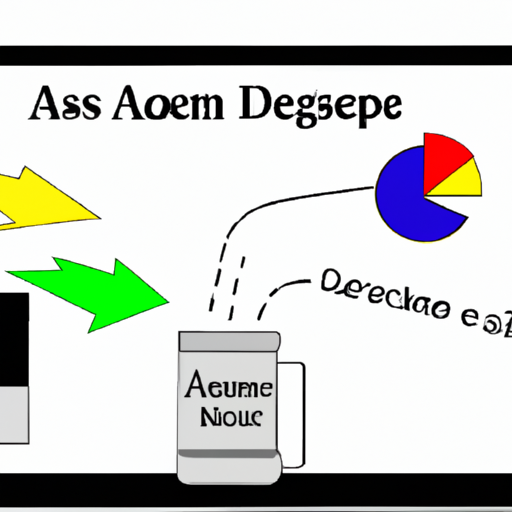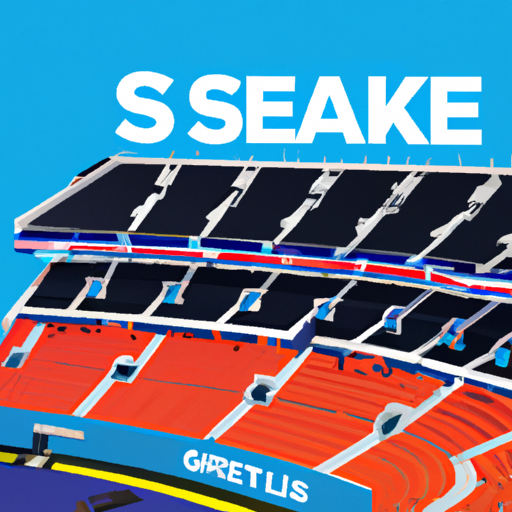The Future of Advertising: Emerging Trends to Watch
As an advertising professional, I’m constantly on the lookout for emerging trends that will shape the future of our industry. And let me tell you, the future is looking incredibly exciting.
From the rise of Artificial Intelligence to data-driven targeting and personalized messaging, there are so many game-changing developments on the horizon.
In this article, we’ll explore the most impactful trends that will revolutionize advertising as we know it. Get ready to be blown away by the possibilities that lie ahead.
Key Takeaways
- Rise of Artificial Intelligence in Advertising: AI-powered ad optimization, AI-driven ad targeting, and AI-based ad creative optimization are becoming increasingly prevalent in the advertising industry, offering time and resource-saving benefits.
- Voice Search and Advertising Opportunities: With the increasing popularity of voice search, advertisers should focus on keyword optimization for voice search, featured snippets in voice search, local search and voice search, mobile optimization for voice search, and targeting voice users in advertising.
- Shoppable Social Media Ads: Advertisers can create a seamless user experience in social media platforms by incorporating shoppable ads, which leverage the influence of influencers and offer precise targeting, real-time analytics, and insights.
- Augmented Reality and Interactive Advertising: Augmented reality (AR) provides an immersive and interactive engagement with consumers, offering unique experiences and increased engagement. AR campaigns also generate data for targeted advertising.
Rise of Artificial Intelligence in Advertising
I’m amazed by how artificial intelligence is revolutionizing advertising, making it more targeted and efficient. AI-powered ad optimization and AI-driven ad targeting are two key areas where AI is making a significant impact.
With the help of AI, advertisers can now optimize their ad campaigns in real-time, allowing for better targeting and improved performance. AI-powered ad optimization uses algorithms and machine learning to analyze vast amounts of data and make data-driven decisions. By continuously analyzing consumer behavior, preferences, and trends, AI can identify the most effective targeting strategies and optimize ads accordingly. This not only saves advertisers time and resources but also ensures that their ads reach the right audience at the right time.
AI-driven ad targeting takes personalization to a whole new level. AI algorithms analyze user data, including browsing history, demographics, and online behavior, to create highly targeted ads. This level of personalization allows advertisers to deliver relevant and engaging content to their audience, increasing the chances of conversion.
In addition to targeting, AI also helps advertisers optimize their ad creative. By analyzing past performance and user engagement, AI can suggest improvements to ad design, copy, and placement. This data-driven approach ensures that ads are visually appealing, compelling, and optimized for maximum impact.
Overall, AI is reshaping the advertising landscape by providing advertisers with powerful tools for optimization and targeting. With AI-powered ad optimization and AI-driven ad targeting, advertisers can reach their target audience more effectively, resulting in higher engagement and better ROI.
Data-Driven Targeting and Personalization
Data-Driven Targeting and Personalization is a game-changer in the advertising industry.
By leveraging data analytics and consumer insights, advertisers can now create highly targeted and personalized campaigns that resonate with their target audience.
This strategic approach not only enhances ad customization but also has a significant impact on consumer behavior, driving higher engagement and conversion rates.
### Effective Ad Customization
I’ve noticed that advertisers are increasingly using advanced targeting techniques to customize ads based on user preferences and behaviors. This shift towards custom ad design and ad personalization is driven by the desire to create more effective and engaging advertising campaigns.
nsights into consumer behavior and tailor their messages accordingly. This data-driven approach allows advertisers to deliver highly relevant content to their target audience, increasing the likelihood of capturing their attention and driving conversions.
Furthermore, personalized ads have been shown to have a positive impact on consumer behavior, leading to higher engagement rates and increased brand loyalty.
As technology continues to advance, we can expect advertisers to further refine their targeting techniques, resulting in even more personalized and effective advertising experiences for consumers.
Impact on Consumer Behavior
Based on my observations, personalized ads have been shown to significantly influence consumer behavior, leading to higher engagement rates and increased brand loyalty.
The ethical implications of personalized ads have sparked debates regarding privacy and data protection. However, from a strategic standpoint, it’s important to acknowledge the positive psychological effects that these ads can have on consumers.
Personalized ads tap into the individual’s preferences, needs, and desires, creating a sense of relevance and personal connection. This targeted approach enhances the overall consumer experience, making them more likely to engage with the ad and consider the brand.
Furthermore, personalized ads have the potential to shape consumer behavior by influencing purchasing decisions and driving repeat purchases. By utilizing data-driven strategies, brands can leverage personalized ads to create meaningful connections with their target audience, while also being mindful of the ethical implications and ensuring consumer trust and transparency.
Influencer Marketing and Brand Collaborations
I love how influencers and brands are collaborating to create unique and engaging content. This trend has given rise to the emergence of micro influencers and micro brands, who are making a significant impact in the world of influencer marketing. These smaller-scale influencers and brands are able to connect with niche audiences in a more authentic and relatable way, which can result in higher levels of engagement and brand loyalty.
When it comes to measuring the effectiveness of influencer marketing campaigns, it’s essential to have a clear understanding of the goals and objectives. By setting specific key performance indicators (KPIs), such as reach, engagement, and conversions, brands can track the success of their campaigns and determine the return on investment (ROI) they’re achieving. This data-driven approach allows brands to make strategic decisions and optimize their influencer partnerships for maximum impact.
In addition to traditional metrics, influencer marketing measurement now includes tracking metrics like sentiment analysis, brand affinity, and purchase intent. These insights provide a deeper understanding of how influencers are influencing consumer behavior and driving sales. By leveraging these data-driven insights, brands can refine their influencer marketing strategies and ensure they’re achieving their desired results.
Overall, the collaboration between influencers and brands has opened up new opportunities for both parties. Brands can tap into the power of influencer marketing to reach their target audience in a more authentic way, while influencers can monetize their influence and build valuable partnerships. With the right measurement and ROI tracking in place, influencer marketing can be a highly effective and strategic component of any brand’s advertising strategy.
Voice Search and Advertising Opportunities
As we delve into the future of advertising and emerging trends, one area that can’t be overlooked is voice search and its impact on advertising opportunities.
With the increasing popularity of voice assistants like Siri, Alexa, and Google Assistant, more and more users are relying on voice search to find information and make purchases.
This presents a unique opportunity for advertisers to target voice users with tailored messaging and personalized offers, tapping into a growing market segment with immense potential for business growth.
Voice Search Impact
With the rise of voice search technology, it’s clear that advertising strategies will need to adapt to this new way of interacting with consumers. Voice recognition and voice assistants are becoming increasingly popular, revolutionizing the way people search for information and make purchasing decisions. As advertisers, we must understand the impact of voice search and adjust our strategies accordingly.
Here are four key areas to consider:
- Keyword optimization: Voice searches tend to be longer and more conversational than traditional text searches. Optimizing content with long-tail keywords and natural language is crucial to ensure visibility in voice search results.
- Featured snippets: Voice assistants often rely on featured snippets to provide answers to user queries. Creating concise and informative snippets can significantly boost visibility and increase chances of being selected as the voice assistant’s response.
- Local search: Voice search is commonly used for local queries, such as finding nearby restaurants or stores. Optimizing local listings and ensuring accurate business information is essential for capturing these voice search opportunities.
- Mobile optimization: Voice search is predominantly performed on mobile devices. Ensuring mobile-friendly websites, fast loading speeds, and easy navigation are critical for delivering a seamless user experience and attracting voice search traffic.
Targeting Voice Users
To effectively target voice users, understanding their search behaviors and preferences is crucial for developing tailored advertising strategies.
Voice assistants are becoming increasingly popular, with more people relying on them for everyday tasks. As a marketer, it’s essential to analyze data on how voice users interact with voice assistants and their preferences when it comes to voice advertising.
By studying this data, we can identify patterns and trends that will help us optimize our advertising campaigns. For example, we can gather insights on the types of queries users make and the context in which they use voice assistants.
Armed with this knowledge, we can create relevant and personalized ads that resonate with voice users, ultimately increasing our chances of capturing their attention and driving conversions.
Shoppable Social Media Ads
I’m excited to see how shoppable social media ads will revolutionize the way we shop online. Social commerce is already a booming industry, with sales expected to reach $604.5 billion by 2027. This new trend of shoppable ads takes it to the next level, allowing users to make purchases directly within the social media platform.
Here are four reasons why I believe shoppable social media ads will have a significant impact on the future of advertising:
- Enhanced User Experience: Shoppable ads eliminate the need for users to leave the platform to make a purchase. This seamless experience increases convenience and reduces friction in the buying process.
- Increased Conversion Rates: By incorporating influencer endorsements into shoppable ads, brands can leverage the trust and credibility of these influencers to drive higher conversion rates. Research shows that 49% of consumers rely on influencer recommendations when making purchase decisions.
- Improved Targeting: Social media platforms have vast amounts of user data, allowing advertisers to target their shoppable ads with precision. By leveraging this data, brands can reach their ideal audience and maximize the effectiveness of their campaigns.
- Real-time Analytics: Shoppable social media ads provide real-time analytics and insights into customer behavior and purchasing patterns. This data-driven approach enables brands to optimize their campaigns, tailor their messaging, and improve ROI.
Overall, shoppable social media ads have the potential to transform the way we shop online. By providing a seamless user experience, leveraging influencer endorsements, improving targeting, and offering real-time analytics, these ads will undoubtedly shape the future of advertising.
Augmented Reality and Interactive Advertising
Augmented Reality (AR) has become a game changer in the world of advertising. It offers a unique and interactive way to engage with consumers. With AR technology, brands can create immersive ad campaigns. These campaigns allow users to visualize products in their own environment. This enhances the shopping experience and increases conversion rates.
AR in Ad Campaigns
Using AR in ad campaigns creates an immersive and interactive experience for consumers. This innovative technology allows brands to engage with their audience in unique and captivating ways. Here are four reasons why incorporating augmented reality advertisements into your virtual reality campaigns can be a game-changer:
- Increased engagement: AR ads capture users’ attention and encourage them to interact with the content, leading to higher engagement rates.
- Enhanced brand experience: By integrating AR into ad campaigns, brands can provide consumers with a memorable and personalized experience, fostering brand loyalty.
- Data-driven insights: AR campaigns generate valuable data, allowing brands to analyze consumer behavior and preferences, enabling more targeted advertising strategies.
- Competitive advantage: Utilizing AR in ad campaigns sets brands apart from their competitors, showcasing their commitment to innovation and staying ahead of industry trends.
Interactive Engagement Strategies
To maximize user engagement, I actively develop interactive strategies that captivate and involve consumers in unique ways. One of the most effective methods I employ is gamification.
By incorporating game elements into advertising campaigns, such as leaderboards, challenges, and rewards, I create an immersive experience that keeps users engaged and motivated. Gamification strategies not only increase brand awareness but also drive customer loyalty and conversions.
Another powerful tool I utilize is virtual reality integration. By leveraging VR technology, I can transport users into a virtual world where they can interact with products and experiences in a realistic and engaging manner. This not only enhances user experience but also enables brands to showcase their offerings in a more impactful way.
Virtual reality integration allows users to explore different scenarios, try out products, and make informed purchasing decisions.
Programmatic Advertising and Real-Time Bidding
I’m really excited about programmatic advertising and how it allows for real-time bidding. Programmatic advertising has revolutionized the way we approach digital marketing, providing us with automated optimization and programmatic campaign management.
Here are four key reasons why programmatic advertising is a game-changer in the industry:
- Efficient Targeting: Programmatic advertising uses sophisticated algorithms to analyze vast amounts of data and identify the most relevant audience segments. This allows advertisers to reach their target audience with precision and maximize their return on investment.
- Real-Time Bidding: With programmatic advertising, ad inventory is bought and sold in real-time auctions. This means that advertisers can bid for ad placements based on the specific criteria they set, such as demographics, interests, and location. Real-time bidding ensures that ad placements are relevant and cost-effective.
- Data-Driven Decision Making: Programmatic advertising provides access to real-time data and insights that enable advertisers to make data-driven decisions. By analyzing metrics such as click-through rates, conversions, and engagement, advertisers can optimize their campaigns for better results.
- Scalability and Flexibility: Programmatic advertising offers scalability, allowing advertisers to reach a wide audience across multiple channels and devices. It also provides flexibility in terms of campaign management, as advertisers can easily adjust their strategies and budgets based on real-time performance data.
As programmatic advertising continues to evolve, it’s crucial for advertisers to stay updated with the latest trends and innovations in order to stay ahead of the competition.
Speaking of innovations, let’s now explore the world of video advertising and the growth of OTT platforms.
Video Advertising and the Growth of OTT Platforms
As a marketer, I’ve noticed a significant rise in the popularity of video advertising and the rapid growth of OTT platforms. Video advertising has become a powerful tool for brands to engage with their target audience and drive conversions.
With the rise of OTT platforms such as Netflix, Hulu, and Amazon Prime Video, there’s a growing opportunity for advertisers to reach consumers who are increasingly shifting their viewing habits from traditional television to streaming services.
OTT platform monetization has become a key focus for marketers, as these platforms offer unique opportunities to deliver targeted and personalized video ads to a captive audience. By leveraging user data and advanced targeting capabilities, advertisers can ensure that their video ads are seen by the right people at the right time, maximizing the impact and effectiveness of their campaigns.
To measure the success of video advertising on OTT platforms, it’s important to track key performance metrics such as completion rate, viewability, and engagement. Completion rate measures the percentage of users who watch the entire video ad, providing insights into the level of interest and engagement.
Viewability measures the percentage of the video ad that’s visible on the screen, ensuring that advertisers are getting the most out of their ad placements. Engagement metrics such as click-through rate and social shares can also provide valuable insights into the effectiveness of video ads on OTT platforms.
Native Advertising and Content Marketing Integration
By integrating native advertising and content marketing, I can create a seamless and relevant brand experience for my target audience. Native advertising, which blends in with the surrounding content, allows me to reach my audience in a non-disruptive way while content marketing helps me engage them with valuable and informative content.
Together, they form a powerful combination that can drive brand awareness, increase customer loyalty, and ultimately, boost sales.
Here are four key benefits of integrating native advertising and content marketing:
- Enhanced content discovery: Native advertising can help me reach a wider audience and drive traffic to my content. By placing sponsored content in relevant contexts, I can attract users who are already interested in the topic, increasing the chances of them discovering and engaging with my brand.
- Increased brand credibility: By delivering valuable and informative content through native advertising, I can position my brand as an authority in its industry. This helps build trust and credibility with my target audience, making them more likely to engage with my brand and consider my products or services.
- Seamless brand storytelling: Native advertising allows me to tell my brand’s story in a way that seamlessly integrates with the surrounding content. By crafting compelling narratives that resonate with my target audience, I can create a memorable brand experience that drives engagement and fosters brand loyalty.
- Targeted audience engagement: By leveraging data and analytics, I can identify my target audience’s preferences and interests. This allows me to create highly targeted native ads and content that resonate with them, increasing the chances of engagement and conversion.
Integrating native advertising and content marketing is a strategic approach that can help me create a meaningful and impactful brand experience for my target audience. By focusing on content discovery and branded storytelling, I can drive engagement, build credibility, and ultimately, achieve my marketing goals.
Mobile Advertising and Location-Based Targeting
Mobile advertising with location-based targeting allows me to reach my target audience in a specific geographic area, increasing the relevance and effectiveness of my ad campaigns.
By leveraging the power of mobile devices and the ability to track users’ locations, I can deliver personalized and targeted ads to individuals based on their real-time location. This not only enhances the user experience but also maximizes the impact of my advertising efforts.
Location-based targeting enables me to tailor my messages to specific geographical areas, ensuring that my ads are seen by the right people at the right time. Whether I want to promote a local event, drive foot traffic to a store, or target tourists in a specific city, mobile targeting allows me to do so with precision.
To showcase the effectiveness of location-based targeting, I have created a table highlighting the impact it can have on ad campaigns:
| Ad Campaign Goal | Location-Based Targeting | Traditional Advertising |
|---|---|---|
| Increase foot traffic to store | 30% increase in store visits | 10% increase in store visits |
| Promote local event | 50% increase in event attendance | 20% increase in event attendance |
| Target tourists in specific city | 40% increase in tourist engagement | 15% increase in tourist engagement |
As the data clearly shows, location-based targeting significantly outperforms traditional advertising methods in terms of achieving specific campaign goals. It allows me to maximize the relevance and effectiveness of my ads, resulting in higher engagement and better results.
With the continued advancements in mobile targeting technology, the future of location-based advertising looks promising, offering endless opportunities for businesses to reach their target audience in a more personalized and impactful way.
Blockchain Technology and Ad Transparency
I believe that blockchain technology can revolutionize the advertising industry by providing increased transparency and accountability in ad campaigns. The potential of blockchain in advertising is immense, and here are four reasons why:
- 1. Immutable Ledger: Blockchain’s distributed ledger technology ensures that all transactions and data recorded are tamper-proof and can’t be altered. This means that advertisers and agencies can have full visibility into the entire ad supply chain, from ad impressions to payments, eliminating any doubts about the accuracy or integrity of the data.
- 2. Smart Contracts: Blockchain enables the use of smart contracts, which are self-executing contracts with predefined conditions. With smart contracts, advertisers can automate processes such as ad verification, payment reconciliation, and performance tracking, reducing the need for intermediaries and ensuring that every party involved meets their obligations.
- 3. Ad Fraud Prevention: Ad fraud is a major concern in the advertising industry, costing billions of dollars each year. Blockchain technology can help combat ad fraud by providing a transparent and auditable record of ad impressions, ensuring that advertisers only pay for genuine, verified impressions.
- 4. Enhanced Privacy: Blockchain allows for the secure storage and sharing of data, giving consumers more control over their personal information. Advertisers can leverage blockchain to obtain consent from users and ensure that their data is used in a transparent and ethical manner.
With blockchain’s transparency and ad fraud prevention capabilities, advertisers can have confidence in the accuracy of their ad campaigns. This increased trust will pave the way for the next section, where we’ll explore the power of user-generated content in advertising.
The Power of User-Generated Content in Advertising
As we explore the future of advertising, one trend that can’t be ignored is the power of user-generated content (UGC). In today’s digital age, consumers aren’t just passive recipients of advertising messages; they’ve become active participants in shaping the brand narrative. This shift has given rise to crowdsourced campaigns and user-generated reviews that are reshaping the advertising landscape.
UGC offers a unique opportunity for brands to harness the creativity and authenticity of their customers. By involving consumers in the brand storytelling process, companies can tap into a vast pool of ideas and perspectives. This not only helps in creating more engaging and relatable content but also fosters a sense of community and loyalty among customers.
Furthermore, user-generated reviews have become a crucial factor in shaping consumer purchasing decisions. In fact, studies show that 84% of consumers trust online reviews as much as personal recommendations. Leveraging these reviews in advertising campaigns can significantly enhance a brand’s credibility and influence consumer behavior.
To capitalize on the power of UGC, brands need to provide platforms and incentives for customers to contribute their content. This can be achieved through social media campaigns, contests, or by simply encouraging customers to share their experiences. By embracing user-generated content, brands can’t only amplify their reach but also build a strong and loyal customer base.
Personalized Messaging and Chatbots in Advertising
Personalized messaging and chatbots have become integral tools in modern advertising. They allow for enhanced customer engagement and targeted advertising strategies. By leveraging user data and AI technology, brands can tailor their messages and content to individual consumers. This increases the likelihood of conversion and brand loyalty.
Moreover, the automation of marketing communications through chatbots streamlines the customer journey. It provides instant and personalized assistance, ultimately driving higher customer satisfaction and sales.
Enhanced Customer Engagement
With enhanced customer engagement, brands can now connect with their target audience on a deeper level. This is made possible through the use of interactive ads and immersive experiences, which provide a more personalized and engaging advertising experience.
Here are four key benefits of enhanced customer engagement:
- Increased brand loyalty: By creating immersive experiences, brands can foster a stronger emotional connection with their audience, leading to increased loyalty and repeat business.
- Better understanding of customer preferences: Through interactive ads, brands can gather valuable data on customer preferences and behaviors, allowing them to tailor their marketing strategies accordingly.
- Higher conversion rates: By providing a more interactive and engaging experience, brands can increase the likelihood of converting leads into customers.
- Improved customer satisfaction: Immersive experiences can leave a lasting impression on customers, leading to higher levels of satisfaction and positive word-of-mouth recommendations.
Overall, enhanced customer engagement through interactive ads and immersive experiences is a strategic approach that can drive better results and long-term success for brands.
Targeted Advertising Strategies
I believe targeted advertising strategies play a crucial role in reaching the right audience and maximizing the effectiveness of my marketing campaigns. By leveraging advertising analytics and forming strategic influencer partnerships, I can ensure that my message is delivered to the most relevant audience segments.
To illustrate the power of targeted advertising, let’s take a look at the following data-driven table:
| Targeted Segment | Advertising Analytics | Influencer Partnerships |
|---|---|---|
| Millennials | High engagement rate | Collaboration opportunities |
| Parents | Increased conversion | Authentic product endorsements |
| Tech enthusiasts | Enhanced brand awareness | Expert product reviews |
| Fitness enthusiasts | Higher purchase intent | Inspirational content |
As shown, targeted advertising strategies allow me to tailor my messaging and approach to specific audience segments based on their demographics, interests, and behaviors. This level of precision ensures that my marketing efforts are not wasted on irrelevant or uninterested individuals.
With the power of targeted advertising, I can now seamlessly transition into the subsequent section about automation in marketing communications. Through automation, I can further optimize my campaigns and streamline my processes to achieve even greater efficiency and effectiveness.
Automation in Marketing Communications
By automating my marketing communications, I can streamline the process and improve efficiency in delivering targeted messages to my audience. Automation allows for precision and personalization at scale, making it an essential tool in today’s digital landscape.
Here are four key benefits of automated email marketing and programmatic display:
- Increased productivity: Automation eliminates manual tasks, freeing up time for strategic planning and analysis. This leads to more effective campaigns and better results.
- Enhanced targeting: Automation enables segmentation and dynamic content customization, ensuring that the right message reaches the right audience at the right time. This improves engagement and conversion rates.
- Real-time optimization: With automated platforms, marketers can continuously monitor and optimize their campaigns based on real-time data. This data-driven approach maximizes ROI and minimizes wasted ad spend.
- Scalability: Automation allows for efficient management of large-scale campaigns, making it easier to reach a broader audience and drive business growth.
Social Responsibility and Purpose-Driven Advertising
As a marketer, I believe that incorporating social responsibility and purpose-driven advertising into campaigns can have a profound impact on both brand reputation and consumer loyalty. In today’s society, consumers are becoming more conscious of the impact businesses have on the environment and society as a whole.
They are seeking out brands that align with their values and actively contribute to making a positive difference. This shift in consumer behavior has given rise to the concepts of corporate sustainability and cause marketing.
Corporate sustainability refers to a company’s commitment to operating in an economically, socially, and environmentally responsible manner.
By integrating sustainability practices into their business operations, companies can reduce their environmental footprint and enhance their brand image. Cause marketing, on the other hand, involves partnering with nonprofit organizations or supporting social causes to create mutually beneficial campaigns. This type of advertising can generate positive brand associations, increase consumer trust, and drive engagement.
To better understand the impact of incorporating social responsibility and purpose-driven advertising into campaigns, I have created a table that highlights key statistics and trends in this area:
| Statistics and Trends | Impact on Brand Reputation | Impact on Consumer Loyalty |
|---|---|---|
| Consumers prefer socially responsible brands | Increased positive perception | Increased brand loyalty |
| 80% of consumers are more likely to purchase from purpose-driven brands | Enhanced brand reputation | Higher customer retention |
| 66% of consumers are willing to pay more for sustainable products | Improved brand image | Increased repeat purchases |
| 91% of consumers expect companies to operate responsibly | Strengthened brand trust | Greater advocacy and word-of-mouth recommendations |
These statistics clearly indicate that incorporating social responsibility and purpose-driven advertising into campaigns is a moral imperative and a strategic business move.
By aligning with causes that resonate with consumers and showcasing their commitment to corporate sustainability, brands can build a positive reputation and foster long-term loyalty among consumers.
The Impact of 5G on Advertising and Consumer Behavior
With the introduction of 5G technology, advertising strategies and consumer behavior are undergoing significant transformations. The increased speed and reliability of 5G networks have revolutionized the way advertisements are delivered and consumed. Here are four key ways in which 5G is impacting advertising and consumer behavior:
- Faster ad delivery: 5G enables ads to be delivered at lightning-fast speeds, reducing loading times and improving the overall user experience. This means that ads can be delivered seamlessly across multiple devices, allowing advertisers to reach their target audience more effectively.
- Enhanced interactive experiences: 5G’s low latency and high bandwidth enable more immersive and interactive ad experiences. Augmented reality (AR) and virtual reality (VR) ads can now seamlessly integrate, providing consumers with engaging and personalized content that captures their attention and drives brand engagement.
- Increased mobile video consumption: With 5G’s faster download speeds, consumers are more inclined to watch videos on their mobile devices. This presents a huge opportunity for advertisers to create compelling video ads that resonate with their target audience, leading to increased brand awareness and conversions.
- Rise of real-time targeting: 5G’s improved connectivity allows advertisers to gather and analyze real-time data on consumer behavior. This data can be used to deliver highly targeted and personalized ads, ensuring that the right message is delivered to the right audience at the right time.
Frequently Asked Questions
How Can Artificial Intelligence Be Used in Advertising?
Artificial intelligence (AI) is revolutionizing advertising by enabling AI-powered ad optimization and AI-driven ad targeting.
With AI, advertisers can use advanced algorithms to analyze vast amounts of data and optimize ad campaigns in real time.
By leveraging AI’s capabilities, advertisers can target their audience more effectively and deliver personalized and relevant ads.
AI also helps in automating tasks, saving time and resources.
The use of AI in advertising is transforming the industry and paving the way for more efficient and targeted advertising campaigns.
What Are the Benefits of Data-Driven Targeting and Personalization in Advertising?
Data-driven targeting and personalization in advertising offer numerous benefits for customer engagement and improved ROI.
By harnessing the power of data, advertisers can strategically tailor their messages to specific audiences, like a skilled artist painting a masterpiece.
This approach ensures that ads are relevant, timely, and resonate with consumers on a personal level.
Consequently, it leads to higher customer engagement, increased conversion rates, and ultimately, a stronger return on investment for advertisers.
How Does Influencer Marketing Work and Why Is It Effective for Brands?
Influencer partnerships are an essential component of effective social media strategies. By collaborating with influencers who have a strong following and influence over their audience, brands can tap into new markets and increase their brand awareness.
Influencers have the ability to connect with their followers on a personal level, which makes their recommendations and endorsements more trustworthy and impactful.
This form of advertising allows brands to reach a highly engaged audience and drive meaningful results.
How Can Voice Search Be Utilized for Advertising Purposes?
Voice search is a game-changer in the advertising world, like a sonic key that unlocks new opportunities. With the rise of voice assistants like Siri and Alexa, brands can now target their audience with precision.
By understanding how people interact with voice search, advertisers can tailor their ads to match user intent and deliver personalized experiences. This data-driven approach allows for strategic ad targeting, reaching consumers in a more natural and convenient way.
The future of advertising is speaking to us, and it’s time to listen.
What Are Shoppable Social Media Ads and How Can They Drive Sales?
Shoppable social media ads are a powerful tool in driving sales through social commerce. These interactive ads allow users to purchase products directly from the ad without leaving the platform. By seamlessly integrating the shopping experience into social media, brands can capture the attention of their target audience and make it easier for them to make a purchase.
This not only increases conversions but also enhances the overall user experience, leading to higher customer satisfaction and brand loyalty.
Conclusion
In conclusion, the future of advertising is set to be driven by artificial intelligence, data-driven targeting, influencer marketing, voice search, shoppable social media ads, user-generated content, personalized messaging, social responsibility, and the impact of 5G technology.
One example of this future is a hypothetical scenario where a clothing brand uses AI-powered data analysis to target their advertisements to specific consumer segments, resulting in a significant increase in sales and brand loyalty.
By embracing these emerging trends, advertisers can strategically reach and engage their target audience in a more personalized and impactful way.











